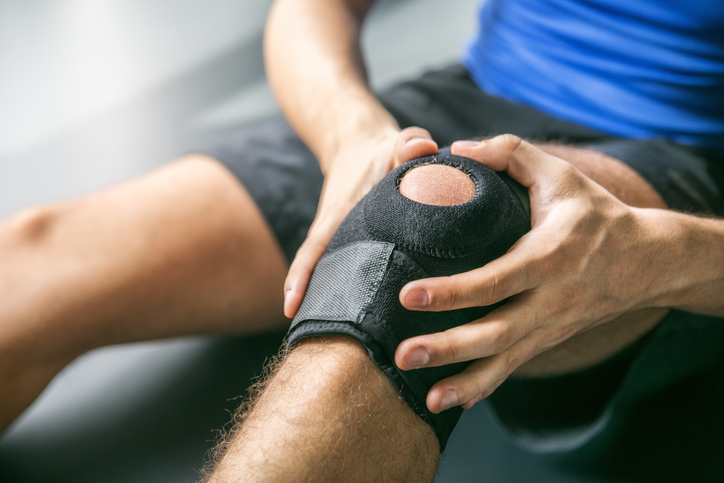Knee pain a very common problem that can occur at any age group. Learn strategies to help alleviate pain, and how Potential Physical Therapy in Malvern, PA can help.
One may have knee pain secondary to trauma/injury at very young age; athletes are most prone to have ACL injury causing knee pain; osteoarthritis is the common cause of knee pain in older adults; and the list goes on. In this article we examine common knee problems and how they affect one’s ability to function, and what common strategies are to assist in alleviating knee pain.
Common knee problems:
Patello-femoral pain/chondromalacia patella
Patellar tendinitis/Jumper’s knee
Ligament tear (ACL/MCL/PCL/LCL)
Most of the knee problems result in loss of flexion range and extension, swelling within joint, less motion and increased stiffness and reflex quadriceps inhibition that may cause quadriceps lag. A patient with arthritis can also develop disturbed balance responses. In a few cases, depending upon age, the pathophysiology or cause of the pain is crucial to determine in order to take care of the underlying problem right away and prevent it from getting worse. Not attending to the underlying issue could lead to the need for knee replacement surgery.
Following are the 5 best strategies one can incorporate in their daily routine for long term pain relief:
- Control pain with the help of an ice pack for 20 min if it is acute pain (< 3months) and use a hot pack for 20 min if it is chronic pain (> 3months).
- Maintain muscle function and prevent joint adhesions by gentle muscle setting exercise like quad sets at different angles and stretching exercise e.g. Quadricep stretches, Hamstring stretches, TFL/ITB stretches.
- Protect the joint by wearing a knee brace/sleeve or by using assistive devices. It is strongly recommended that you see a physical therapist before deciding which option is best for you.
- Avoid bed positioning that promotes knee flexion contracture.
- Make functional adaptations till the point that your pain is relieved and your muscles are strong enough to perform ADLs without discomfort. Examples for functional adaptation may include the minimization of stair climbing, the use of elevated seats on commodes, and the avoidance of deep seats or low chairs.
Along with these strategies it is wise to perform strengthening exercises to achieve long-term pain relief.
Learn more about exercises for knee/patella pain
https://www.instagram.com/p/By5uH9qHJMS/?igshid=jukj9aoajk0l
Every knee pain is different and needs a specific approach to be treated, and for this reason it is important to consult a physical therapist or doctor before starting any exercise program.
Call us if you have any question about your knee pain, we will be happy to assist you.
Reference articles:
https://www.moveforwardpt.com/SymptomsConditionsDetail.aspx?cid=b92021cb-a1ec-4f20-8b7e-37d62bc1a52e


